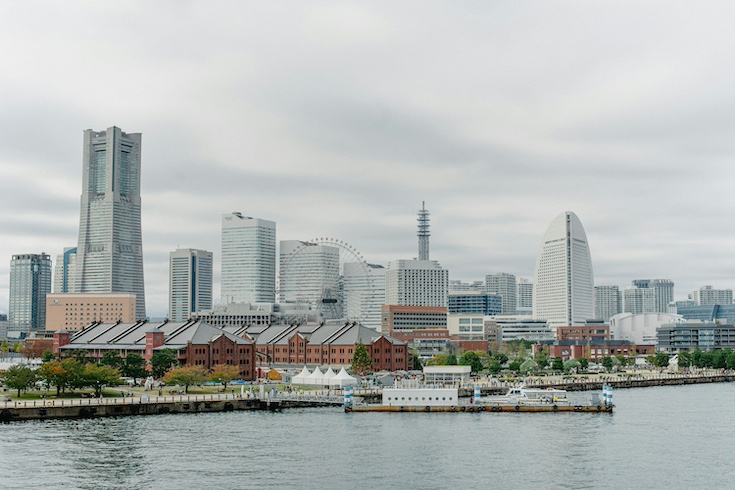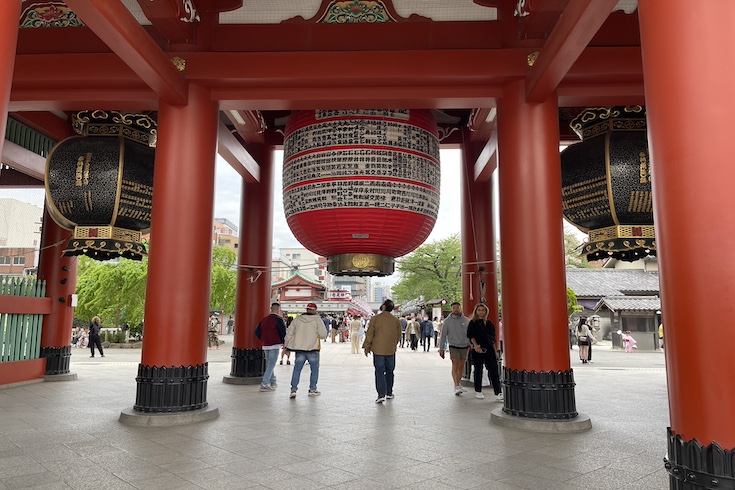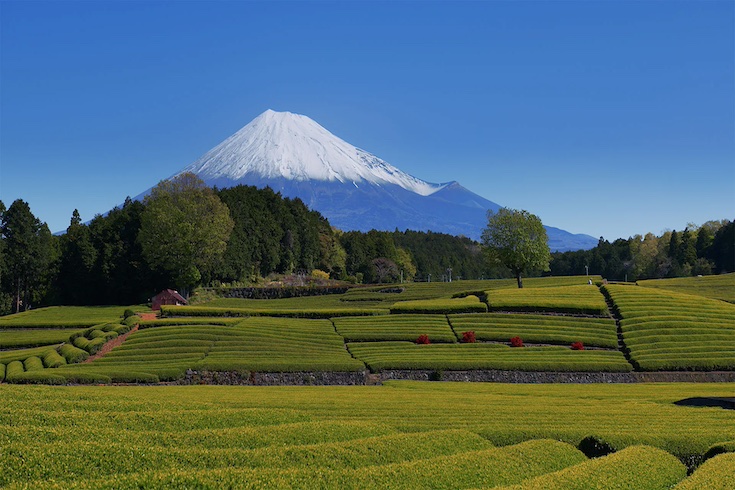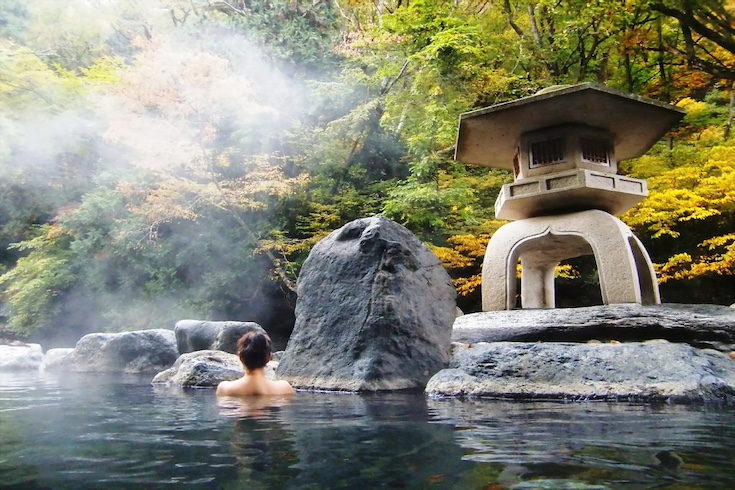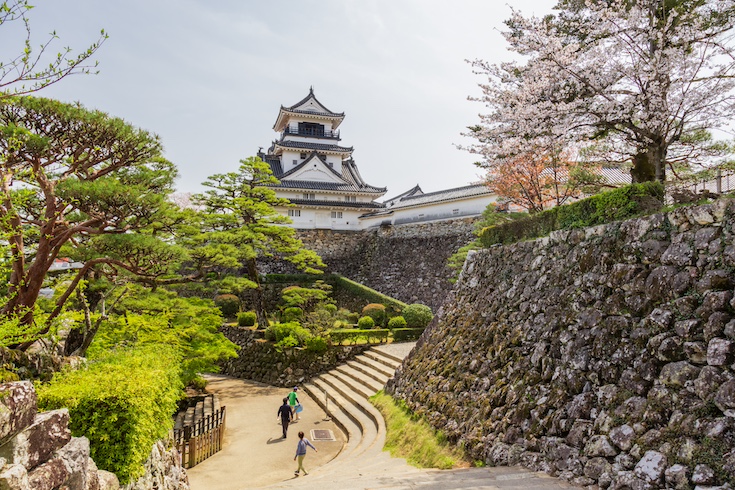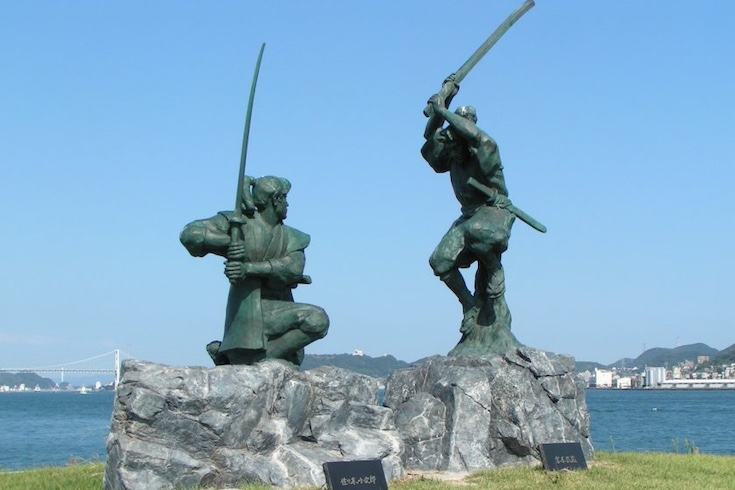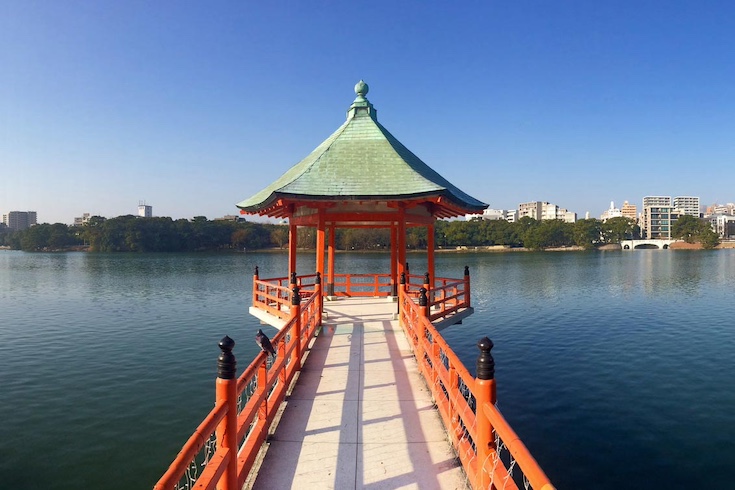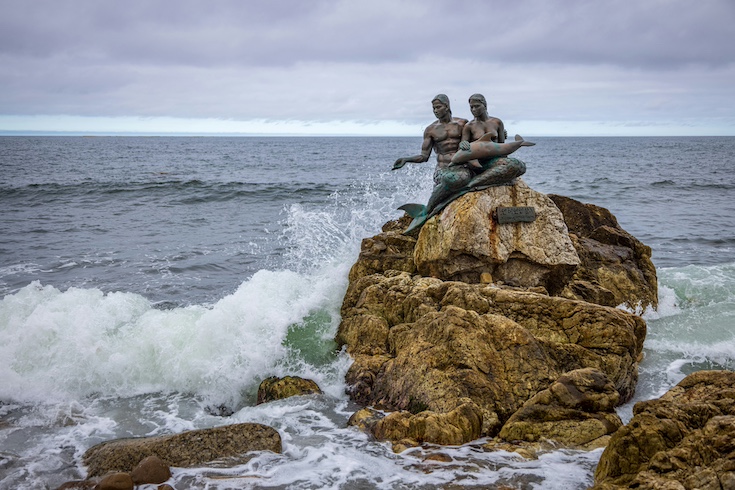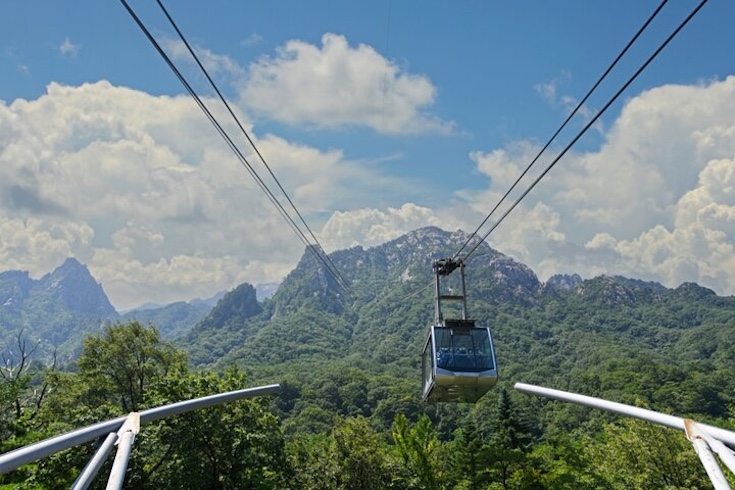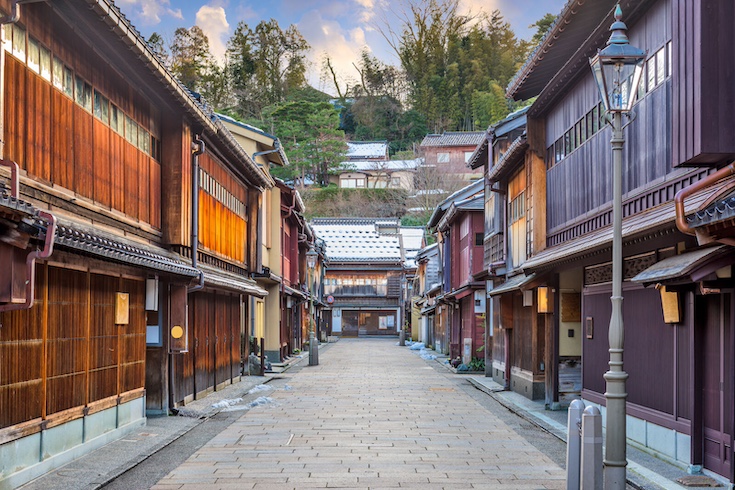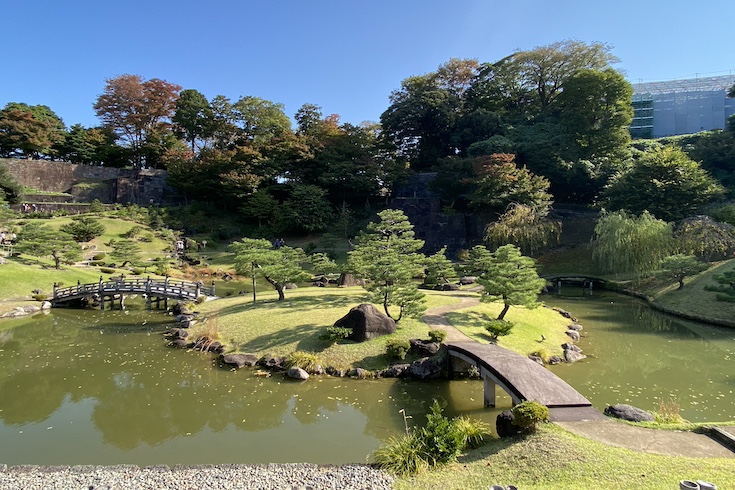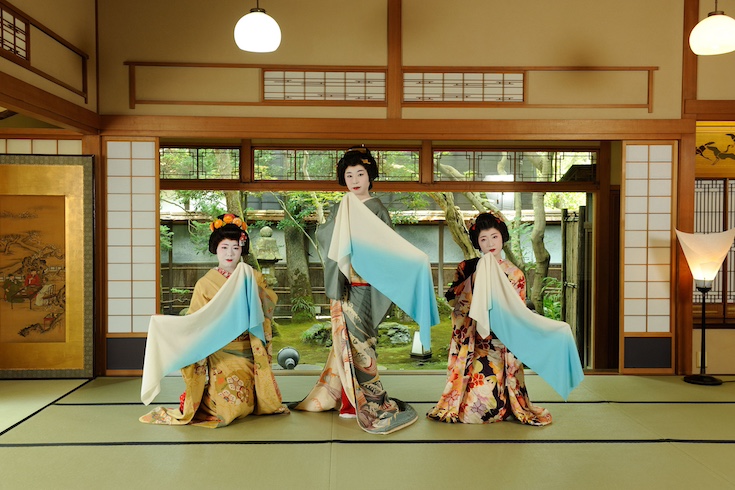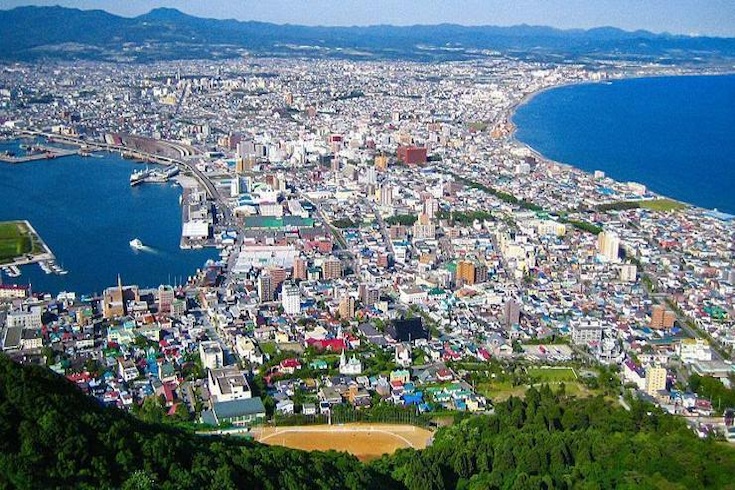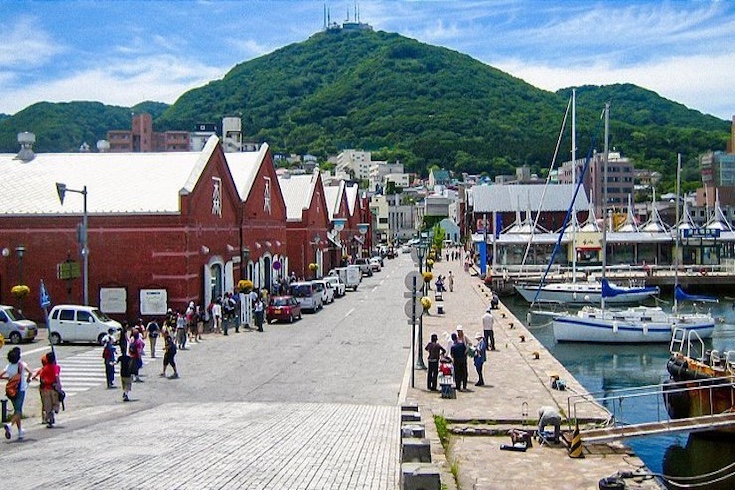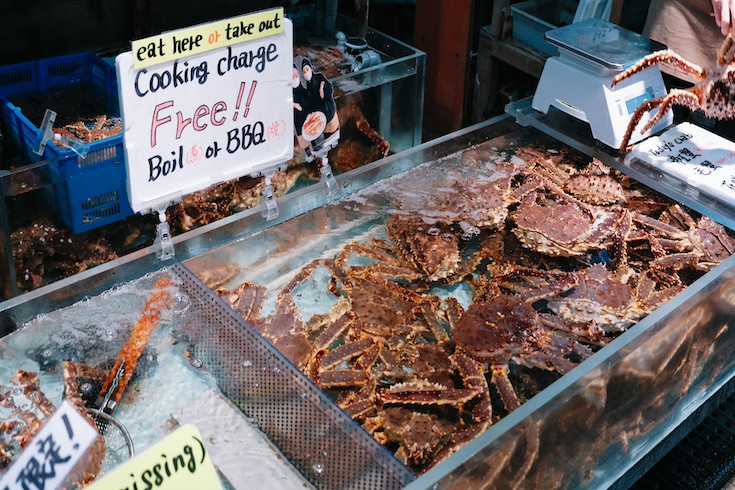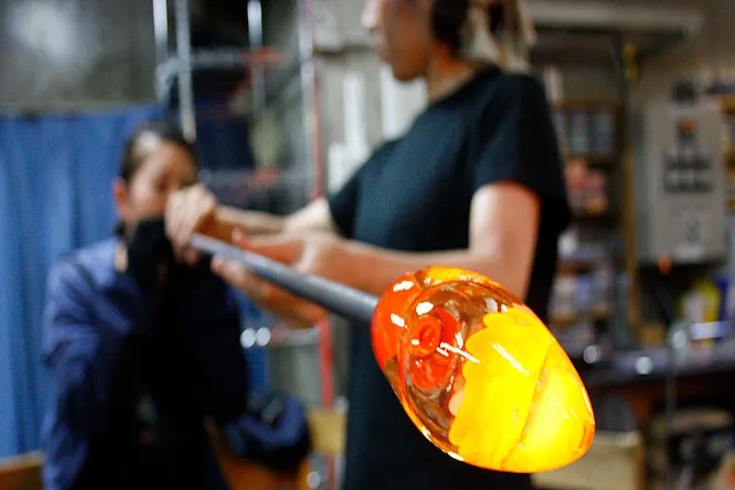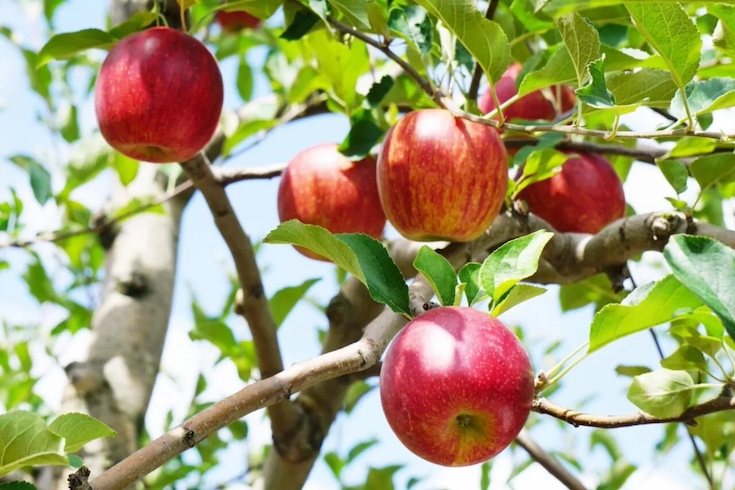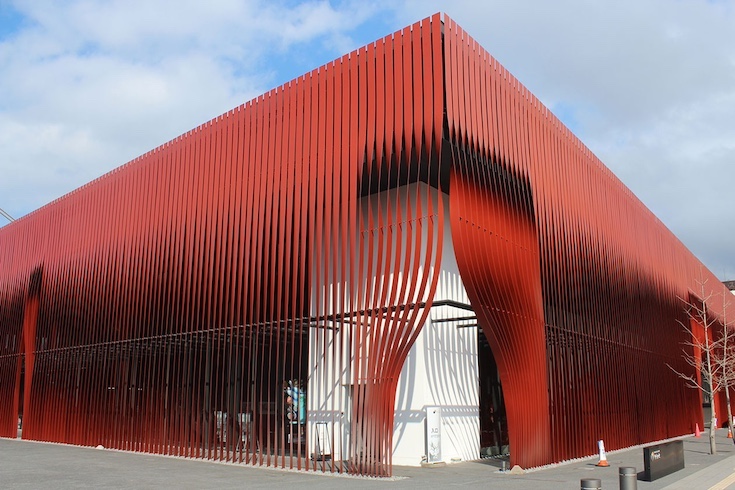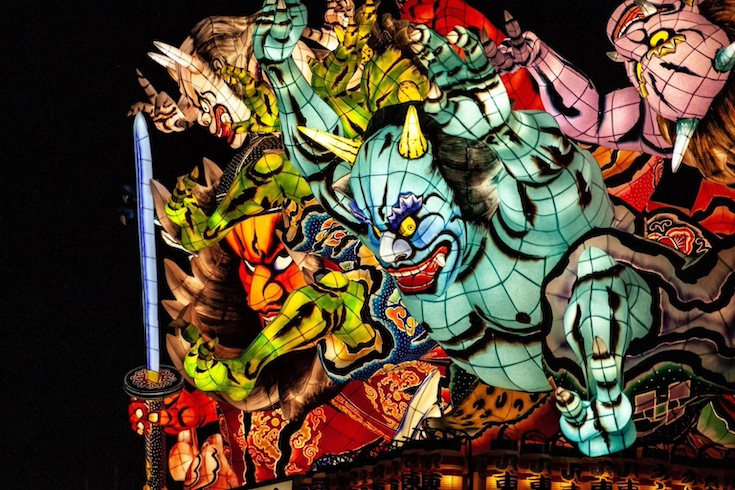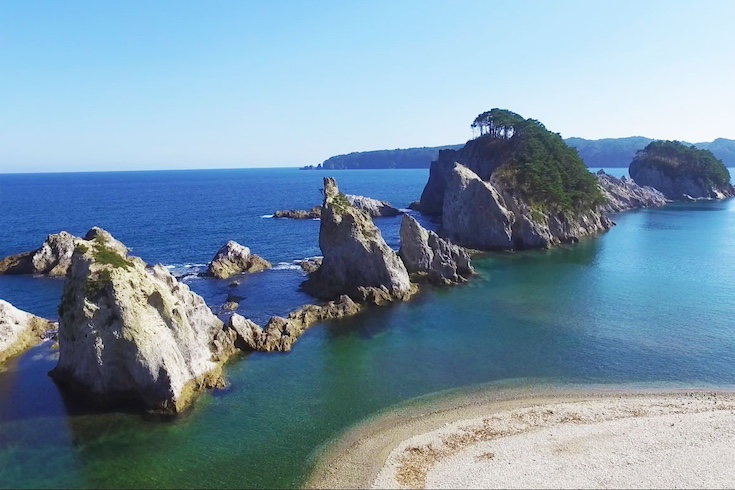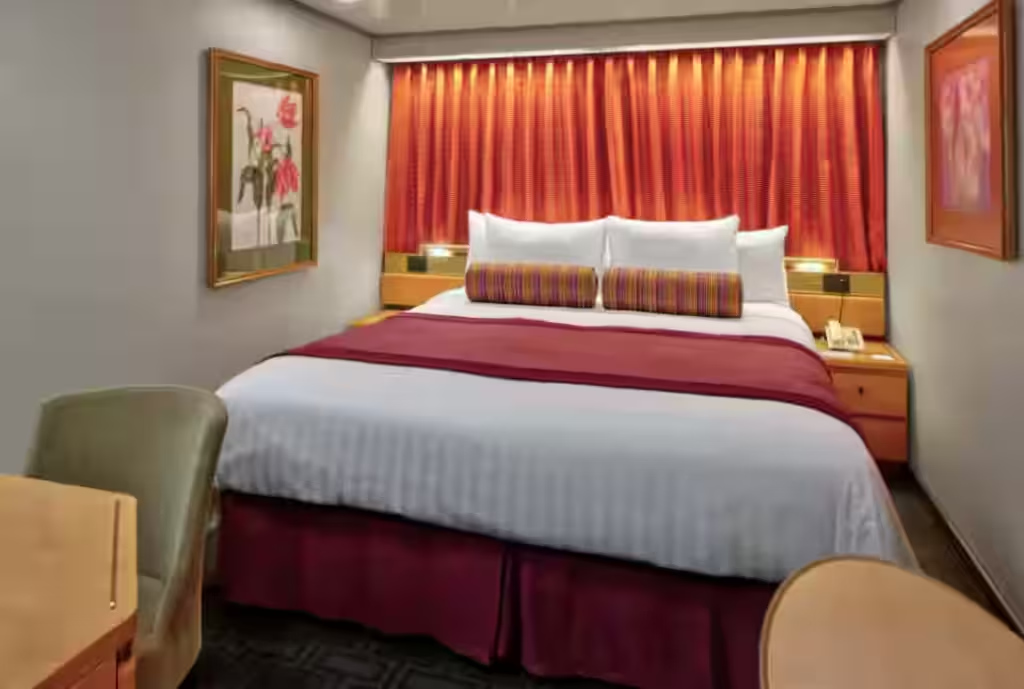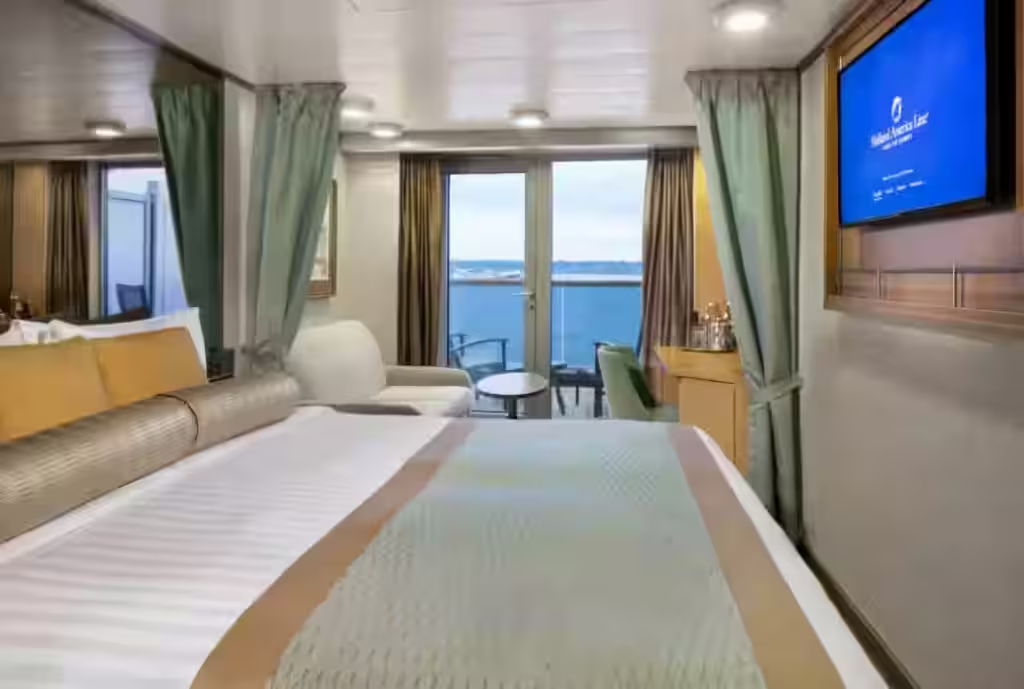Price from $2,779 ~
- GuaranteedSundayOct 12, 2025SundayOct 26, 2025NotAvailableSold Out
Check tabs for the cruise itinerary, and available staterooms.
Share this amazing cruise with your family and friends.
Trip Summary
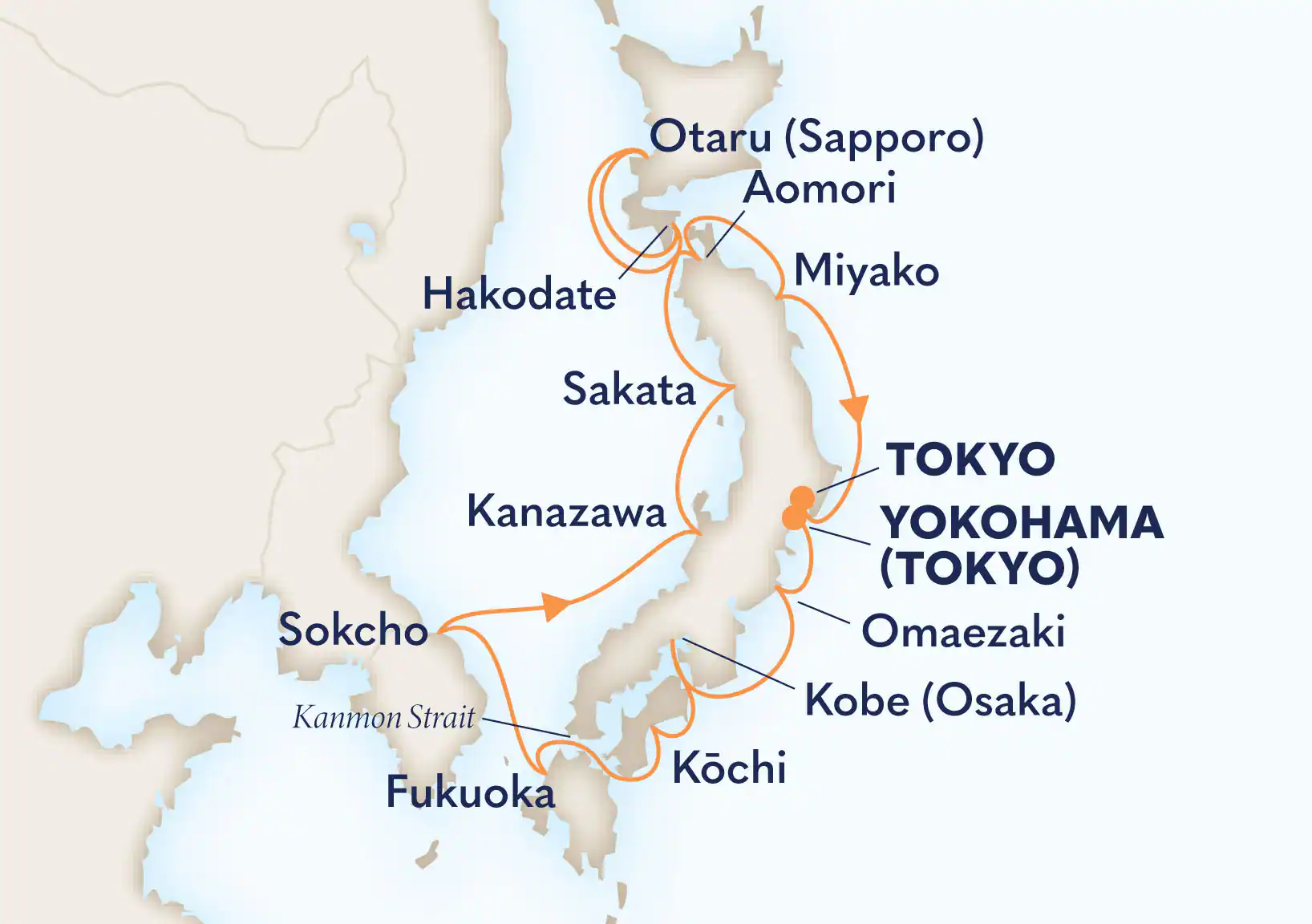
Joni this 15-Day Circle Japan by the Holland America Line. We embark the cruise on an award winning ship, the Westerdam, from Yokohama. And the cruise ends in Tokyo. You stop at fascinating port cities across Japan and South Korea. This Deaf cruise experience ensures accessibility and enjoyment for all.
Did you know that the Westerdam Ship has won multiple Best Cruise awards? The ship features superb bars, entertainment and dining venues. And you rejuvenate with a spa treatment by the heavenly Greenhouse Spa and Salon. Or you head to the upper deck for a game of pickleball with top deck views. In the evening you watch a live show at the World Stage and go dancing at the Rolling Stone Lounge. There will be many more activities on the ship including auctions and shopping.
The cruise package includes your choice of stateroom cabin with a full meal plan of breakfast, lunch and dinner. And you have access to amazing onboard facilities, activities and entertainment on the ship
Peggy Prosser and Robin Ching will be on the ship as Deaf World Adventures conductor with Holland America Line. Robin is the person you talk to about booking your stateroom cabin and any other necessities with regard to the cruise. Peggy will manage the shore excursions with Tours by Locals in Japan.
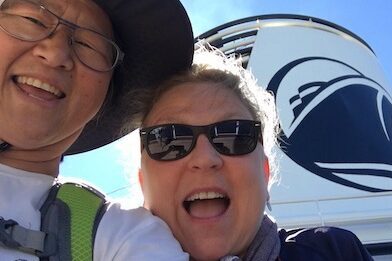
Itinerary
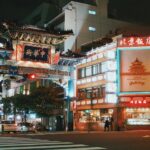
Until the mid-19th century, Japan lived in isolation, closed off from the rest of the world, and Yokohama was a mere fishing village. Then an American naval officer Matthew Perry arrived to Yokohama and demanded the country open to foreign trade. city quickly emerged as vibrant international trading center with imports and exports. It is often overshadowed by mega city, Tokyo which is less than an hour away. Yokohama is different from other port cities in Japan.
Popular neighborhoods in the city include Yokohama’s lively Chinatown, the Minatomirai Harbor Front with the red brick warehouse, Cosmo World amusement park, The old Kannai district with waterfront park and the Yamatecho, an old foreigner settlement with foreigner cemetery.
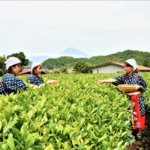
Omaezaki is a laid-back seaside town in the Shizuoka Prefecture. The beach is a favorite weekend escape for windsurfing in Japan. Many locals from Tokyo come to the beach for surfing and also for snorkeling and fishing, too.
The Shizuoka region is also known for its rolling green tea hills. Sometimes Mt. Fuji makes an appearance in the background. You may visit a tea farm and pick some tea leaves and the factory that process tea for world markets.
And near the port is a fish market. There you can see the catch of the day. There are several local seafood restaurants where you can enjoy some lunch of fresh fish. Be it sushi or some cooked fish. Let’s eat!
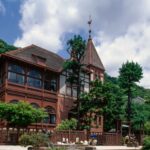
District
Kobe is located between the sea and the Rokko mountain range. Its port was among the first to be opened to foreign trade in the 19th century, alongside with two other ports Yokohama, and Hakodate included on your cruise itinerary. Kobe is considered to be one of Japan’s most attractive cities. Many Japanese, describe Kobe exotic and saying “If you can’t go to Paris, go to Kobe.” There are a lot to see and do in the city Kobe.
Near the port is the Kitano-cho district where many foreign merchants and diplomats settled after the Kobe port opened to foreign trade. You can see more than a dozen of former foreigner resident mansions in the district. Some houses are open to public for visiting. And you could probably enjoy a lunch of famous Kobe wagyu beef at a fine restaurant in the district.
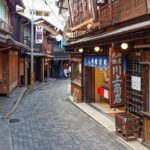
Or if you like to explore further, you can ride up on Kobe’s charming cable-car and ropeway system between mountains. You see the city’s abundant natural beauty, with its dense forest that draws a striking contrast with the adjacent urban cityscape. There are several artisan shops, cafes and restaurants on top of the mountains. And there’s a farm near the ropeway station with a huge pasture for it’s cows, sheep and horses. The farm some of the best cheese in Japan.
Alternatively you can explore the ancient Arima Onsen Resort. It is the oldest Onsen (hot spring) resort in Japan, founded 1300 years ago. And since days of old, Arima is known as a timeless spa resort where Emperor, numerous famous court nobles, samurai, and other great minds visited. You may book a time slot to experience a hot spring bath at one of onsen resort facilities.
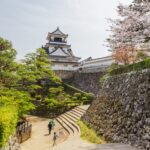
The city, Kochi is on Shikoku Island and embraces the Pacific Ocean. The island boasts a natural landscape with green mountains and blue rivers. Kochi captivates visitors with its rustic charms and outdoor recreational activities. There are a lot of history, scenery and fun activities in Kochi.
Adventure seekers may like to go to Iya Valley for some wild rafting on the rapids of the Yoshino River. The scenery at the valley is amazing and the river is formed with wildly shaped rocks along the banks. There’s a vine bridge you can cross on over the river.
And for travelers who enjoy beautiful natural scenery may want to see the Ryugado Cave. The cave is one of Japan’s three major limestone caverns and is a national treasure. Research has documented that the cave was home to early humans.
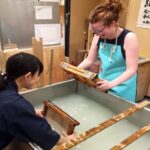
Craft lovers may want to learn about Japanese washi paper. The paper is an iconic piece of Kochi’s heritage, produced in the prefecture for more than 1,000 years. Washi paper is one of Japan’s intangible cultural heritage object. The raw materials needed to make the pulp, are collected in the mountainous area and the nearby cobalt-blue Niyodo River supplies the water needed to make this fine washi paper. You may join a workshop and make your own paper craft.
The island has abundance of delicious and healthy food. We recommend you to try the local “katsuo no tataki” delicacy during your stop in Kochi prefecture. And don’t miss Kochi ice cream made from locally sourced fruits. It’s a bit like sherbert but with less milk or cream.
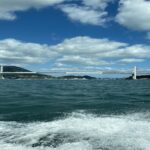
Kanmon Strait is a narrow channel of water that separates Honshu and Kyushu, two of Japan’s four main islands, while connecting the Sea of Japan with the Inland Sea.
The Kanmon Strait have been important for both land and sea transport since ancient times. Various forms of culture that first arrived in Japan has given uniqueness to the two cities standing on each bank and the people’s lives in the cities.
It may look like an ordinary strait, but the Kanmon Strait is a place where some great historical sea battles were fought not just an ordinary expanse of sea water.
Numerous historic landmarks and monuments still remain in the Kanmon Strait. You can view the monuments from your ship on water as you pass through.
Fukuoka city is built along the shores of the Hakata Bay, and has been the center of international commerce since ancient times. Fukuoka has long been considered the gateway as it is the nearest point among Japan to the Asia. And because of cross culture exposure, Fukuoka has an interesting heritage. Unlike other cities in Japan, Fukuoka has a distinctive local culture and dialect that is still practiced and spoken today.
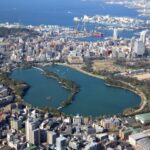
About the city, when the Fukuoka Castle was constructed, the north side was reclaimed and made into a region where feudal warriors resided. The remainder was the outer moat on the west side of the castle, and was referred to as “Ohori” which means large trench or moat, reflecting a geographical feature or possibly a historical or construction-related aspect associated by occupation and clan affiliation.
In 1900, the area became attached to Nishi Park. And in 1925, the park was redesigned with a landscape gardening. The park was renamed to Ohori Park in 1929. Today the park is a huge garden with a central pond, hills and a forests built with traditional Japanese aesthetics. The pond in particular is one of Japan’s most prominent garden with water scenery. It is designated as a Registered Monument of Japan. And it also has a meandering stream, dry landscape garden, sukiya-zukuri style teahouse, a teahouse garden, and more. Let’s go for a walk in the park.
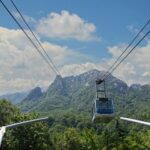
We’re going to South Korea! We’re stopping at Sokcho that is northeast of S. Korea. It has a beach, a fish market and is much loved by travel enthusiasts for its natural wonders at the National Seoraksan Mountain park.
Near the port is the Sokcho Central Market, a lively marketplace. Once you get off the ship for excursions you make your way through a maze of street vendors. Also near the port and the market is the Sokcho Beach. It’s a local favorite place to unwind amid the golden sands and turquoise surf. At the beach there is the Sokcho Eye, a huge ferris wheel. It’s the landmark of the beach. Get on it and ride up high for a great view of the blue sea.
Or you may be interested in exploring the dramatic natural scenery of the Seoraksan National Park. It has a dense forests, jagged granite peaks and crystal-clear streams. The park is only 30 minutes from the pier. At the park, you may walk an easy trail or take a cable car ride to the top of Mt. Seoraksan to admire endless views of cliffs and coastlines.
Each day on board offers delicious dining options, world-class entertainment, and enriching activities.
Your ship, Westerdam, a fascinating ship in her own right, has won multiple Best Cruise Ship awards. It features superb bar, entertainment and dining venues. During the day, rejuvenate with a spa treatment at the heavenly Greenhouse Spa & Salon. There are plenty of things to do. You head to the upper decks for a friendly game of Pickleball at Sea with top-deck views, catch a performance at the World Stage or spend your evening dancing at the Rolling Stone Lounge.
Deaf World Adventures (DWA) will create DWA space for Deaf group activities and games while at sea. If you have a favorite activity or game, let us know.
(Info Holland America)
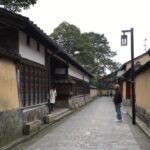
Kanazawa City is located on the shores by the Sea of Japan. The city is a bustling hub with fisheries and ships arriving and departing for South Korea, Russia and China. The city boasts many beautifully restored and preserved historical landmarks and modern museums. Kanazawa’s unchallenged attraction is Kenrokuen that is one of Japan’s best landscape gardens and by many considered the most beautiful of them all.
Kanazawa heritage is fascinating. During the Edo Period, Kanazawa served as the seat of the Maeda Clan, the second most powerful feudal clan after Tokugawa in terms of rice production and fief size. Accordingly, Kanazawa grew to become a town of great cultural achievements, rivaling Kyoto and Edo (now modern day Tokyo).
During World War Two, Kanazawa was Japan’s second largest city (after Kyoto) to escape destruction by air raids. Consequently, parts of the old castle town, especially the Nagamachi Samurai district and Chaya tea houses, have survived the war and are in a pretty good condition.
Sakata is an old port city where the Mogami River flows into the ocean. It was a perfect position because it allowed the port city to be of service to the river boats that brought in rice, and other commodities from Tohoku inland for export to other cities in Japan and later to the world.
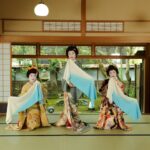
The city grew as an important stop along the coastal shipping route that connected to Hokkaido, the northernmost island of Japan and with Osaka a city on east side of Japan facing the pacific ocean and Seto inland sea during the Edo period between 1603 to 1868.
A local merchant family, the Honma, came to dominate trade in the city and accrued a vast fortune that made them wealthier than some of the country’s feudal lords. As a result, the family developed close ties with the local lords and had some important infrastructures and buildings built. The old Somaro tea house is one of the best places to experience the history and culture of Sakata. Visitors can watch Sakata maiko (similar to geisha) perform traditional dances.
People have compared, saying if Japan ever had a wild west, it would be Hokkaido. Hokkaido’s remoteness is so legendary. The indigenous Ainu people were in Hokkaido lived in the region for years. They have their own culture and language. The cornerstones of Ainu culture includes: their beautiful attush robe, wood sculpting work, and their ceremonies like, you’d be surprised, sacrificing a brown bear to their god. Unlike many Japanese, the Aniu dislike uncooked fish. And so… eating sushi is not as popular on the Hokkaido island as in Honshu Island, Japan.
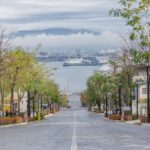
In 1997, the Japanese government finally recognized the Ainu’s right to their own culture. You can learn more about the Ainu people and their unique culture at the Hakodate City Museum of Northern Peoples. The museum exhibits items and folk crafts used by Ainu people.
About the city, Hakodate, was among the first Japanese port cities that opened to international trade after the country’s era of isolation. As a result, the city has experienced notable influence from overseas, and the foreign population’s former residential district. Western and far east Asia style homes and religious sites are built in the district. And there is a foreigner cemetery in the district, too. You can take a cable car up to a peak and look down to a lovely port city.
Next stop is Otaru, a rather small important harbor town northwest of Hokkaido. In the 1800’s the Otaru flourished with herring fishing and became the center of the economy of Hokkaido, exporting tons of herring fish to other cities in Japan and across the Japan sea to Asia countries. The port town became known as Asia’s herring capital. During the city’s economic boom the Nishin Goten (“herring mansion”) a former fish processing plant was built on a high hill that looked out to the Japan Sea. And also a new canal was built for better distribution.
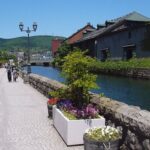
Following these developments, many warehouses and overseas shipping offices were built around the canal. Many of these old offices were built by Asian shipping companies. The Herring Mansion and some other former shipping offices are open to visitors.
Today the shipping dock has moved to a larger port. This prompt the city to preserve the historic canal with new developments, converting the old warehouses and office buildings into new business space. Today the canal is an artisan hub with exciting workshops, galleries and speciality shops. Some of the new spaces are still used as warehouses. The new change gave Otaru canal special character that reminiscent it’s past.
Otaru City is now known for glassworks, music boxes and sake distilleries. Hands on experience glass making or other crafts and sake tasting is available to visitors.
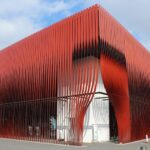
Aomori is the northernmost prefecture on the Honshu island of Japan and is blessed with both diverse culture and magnificent nature. Aomori has a beautiful four seasons and natural scenery. It is very green in the summer, pink with cherry blossoms in the spring, full flame in the autumn and Aomori is a snow county with a beautiful winter wonderland. You may be surprised to learn that Aomori is recorded the snowiest city in the world.
Aomori celebrates its culture with amazing festivals all year around. The most famous the Nebuta Festival that is a spectacular event with giant paper floats parading the streets of Aomori. Many people from all over the world come to watch this festival. After the festivals, many floats are stored in a Yatai gura, a kind of storehouse around the town. Some important floats are stored and exhibited at the Wa Rasse, known as the Nebuta House. The house is partly a storehouse and museum opened to visitors. The exhibition is devoted to the city’s famous Nebuta festival.
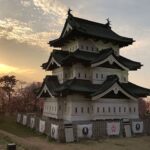
See the the Sannai-Maruyama, an ancient UNESCO World Heritage settlement ruin that offers visitors a glimpse into Japan’s prehistoric past. There you explore the archaeological wonders on this site, uncovering the mysteries of Japan’s earliest inhabitants. You can enter and explore the pit-type house and see some ancient Jomon earthenware fragments have been dated as early as 14,500 BC.
You should stop by to see the Hirosaki park with beautiful and elegant landscape of natural scenery of trees, moats, and bridges. And the charming Hirosaki Castle is inside the park. The castle involves a number of original turrets and impressive wooden gates. Also in the park is the spectacular Zenrin-gai. It is next to the castle and is home to 33 ancient Zen temples and shrines.
Not to mention, Aomori has the best apples in Japan. They make a lot of things with apples, not just foods but also things.
Miyako is a port city known for its beautiful coastline, especially the popular Jodogahama Beach. It is set against a ruggedly coast and a picturesque pebble beach with rock outcroppings. A photographer’s paradise.
Indeed to share that Miyako suffered a devastating damage from the 2011 Tsunami. The rising waters swept across many of the city’s coastal districts, destroying homes, businesses, port facilities and a large part of the local fishing fleet. Some of the tsunami’s most unforgettable videos were filmed in Miyako.
Tourist facilities around the beach were heavily damaged. The city has cleaned. The seaside promenades recently have been replaced and improved. Sightseeing attractions, new tour services and accommodations are reconstructed and have fully reopened.

A new sightseeing boat of Miyako opened new service on July, 2022. Visitors now can enjoy beautiful view of national scenic spot Jodogahama Beach and Sanriku Geoparks along the coastline from the sightseeing boat. And there’s a new panoramic view with scenery from wide observation deck in the Geopark. The iconic landscape invokes images of the ‘Pure Land,’ a Buddhist concept of paradise on the waters of Jodogahama.
Or you hop in a car to go see the natural wonders on Miyako’s Sanriku shoreline, the Kamaishi Daikannon Statue, a towering statue of the Buddhist ‘Goddess of Mercy’ and the Rokando Cave, an underground cascade with a hidden waterfall.
Also no visit to Miyako’s shores would be complete without visiting Taro, a small fishing port north of the city. This town was badly damaged by the 2011 Tsunami. You can see that some reconstruction are still going. Also the famous Taro Kanko Hotel that is now an exhibition of the 2011 tsunami. The hotel’s six-story building was flooded by the tsunami waters that rose 17 meters to its fourth floor just 45 minutes after the 9.0M earthquake. The exhibition is a serves as commemorative site. And from the Kanko Hotel is a short walk to the Taro Station that is now an train new station with a roadside rest stop for travelers in cars. This station became the city’s main shopping center after all local shops were destroyed on the day of the tsunami. You can see from the observance deck of the Taro station rest stop the reconstruction of the city with new high walls built to protect the city from any next tsunami.
Each day on board offers delicious dining options, world-class entertainment, and enriching activities.
Your ship, Westerdam, a fascinating ship in her own right, has won multiple Best Cruise Ship awards. It features superb bar, entertainment and dining venues. During the day, rejuvenate with a spa treatment at the heavenly Greenhouse Spa & Salon. There are plenty of things to do. You head to the upper decks for a friendly game of Pickleball at Sea with top-deck views, catch a performance at the World Stage or spend your evening.
(Info from Holland America)
Deaf World Adventures (DWA) will create a DWA space for Deaf group activities and games for the days at sea. If you have a favorite activity or game, let us know.
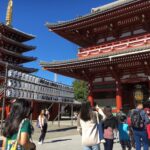
Tokyo is Japan’s capital and the world’s most populous metropolis. It is home over 14 million people. There is no shortage of activities in the metropolis with an unlimited choice of shopping, high end-tech entertainment, and Michelin-star dining to its visitors.
The city is an intersection of rich traditions and world-leading technologies. The history can be seen in districts such as Asakusa and Yanaka with temples, shrines, hidden cafes that were once home to the samurai and in many excellent museums, and gardens. Modern skyscrapers, electronic stores and quirky fashion are spotted in Shinjuku, Shibuya, Harajuku, Ginza and Akihabara.
Contrary to common perception, Tokyo also offers a number of attractive green gardens and parks in the city center and Tokyo is within relatively short train rides at its outskirts to Yokohama, Kamakura, Hakone, Nikko and Kawagoe.
INSIDE ROOM
FROM $2,429 (base price) per person

- beds convertible to 1 queen-size bed
- Approximately 151 ~ 233 sq ft with shower
- Luxurious bathrobes for use during the voyage
- Make-up mirrors and hair dryers
- Elemis Aromapure soaps, lotions, shampoo
- Complimentary 24-hour in-room dining
OCEAN VIEW ROOM
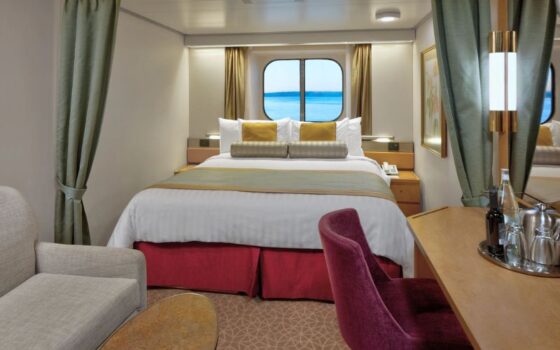
FROM $2,729 (base price) per person
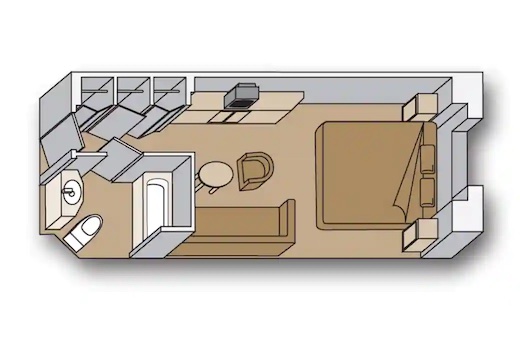
- 2 lower beds convertible to 1 queen-size bed
- Approximately 174-180 sq. ft. with bathtub and/or shower
- Luxurious bathrobes for use during the voyage
- Make-up mirrors and salon-quality hair dryers
- Elemis Aromapure soaps, lotions, shampoo
- Complimentary 24-hour in-room dining
ROOM WITH VERANDA
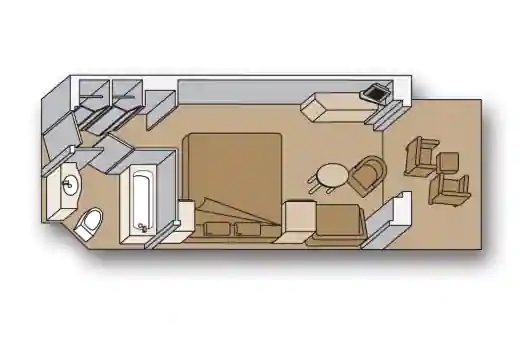
- 2 lower beds convertible to 1 queen-size bed
- Approximately 212-359 sq. ft with bathtub and shower
- Luxurious bathrobes for use during the voyage
- Make-up mirrors and salon-quality hair dryers
- Elemis Aromapure soaps, lotions, shampoo
- Complimentary 24-hour in-room dining
- Video On Demand Interactive TV System
Inquire Deaf World Adventures agent about more options, sizes, and different features for each room.
Contact us
Package Includes
Includes
- Choice of Cabin Room
- Full Board
- Taxes and Port Fees
- Daily Onboard activities
- Daily Entertainment
- Fitness Center
- Swimming Pool
- Explorations Central
- Casino Games
- Sign Language Interpreters
Not Included
- International Flight
- Flight Insurance
- Cruise Cancellation Insurance
- Travel Insurance
- Airport transfers
- WIFI Services
- Shore Excursions
- Alcohol & Soft Drinks
- Meals Other Than Full Board Plan
- Spa or Massage Bookings
- Laundry Services
- Gratuities
